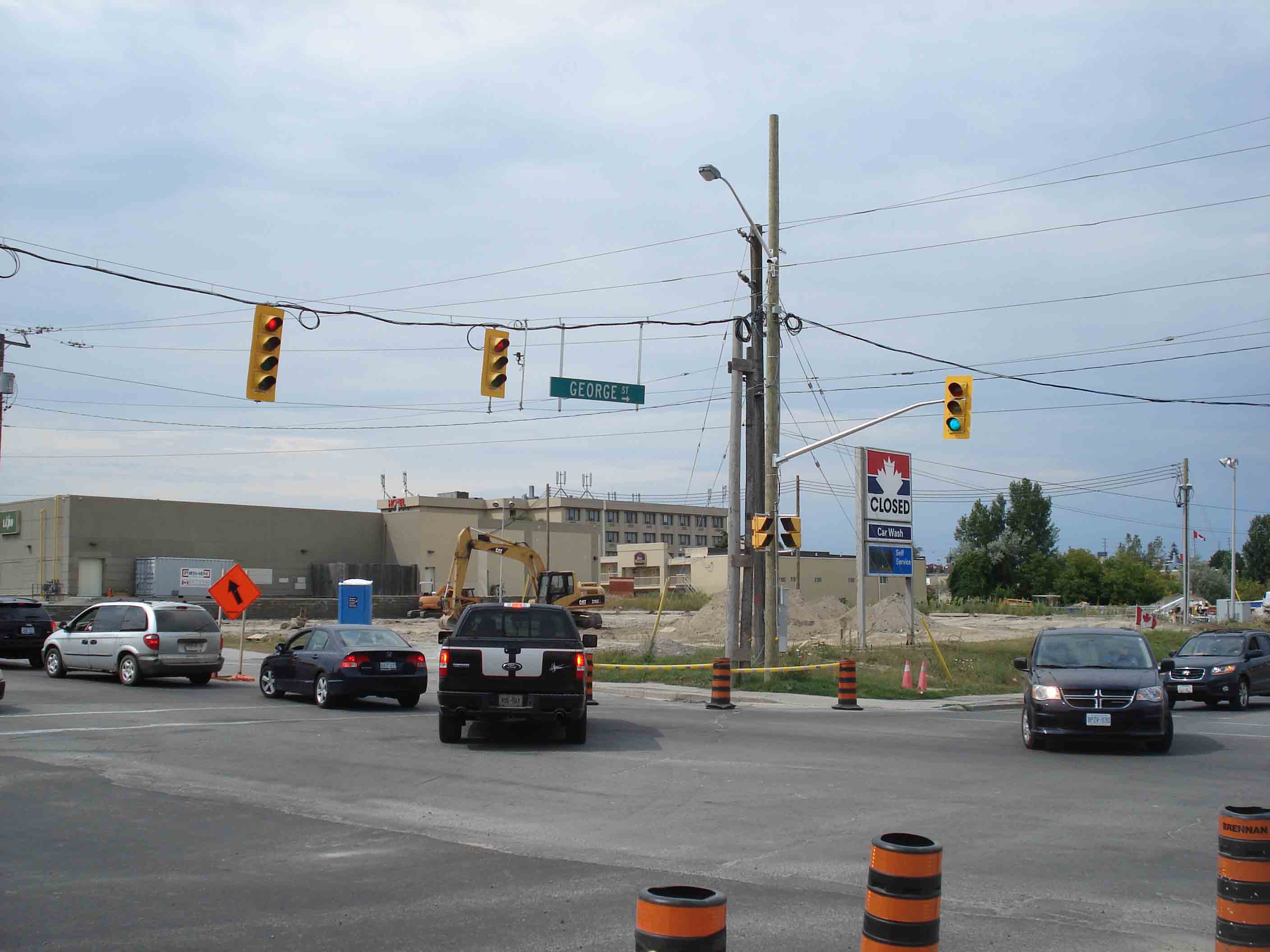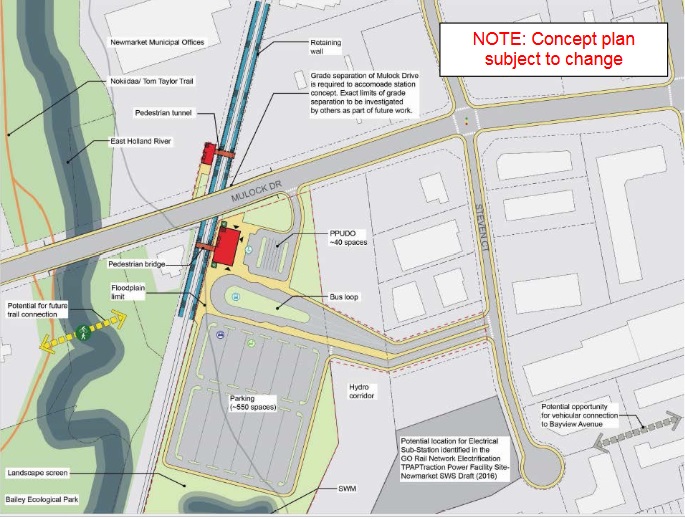- Details
- Written by Gordon Prentice
What is this all about and why is it important? Live video streaming of York Region meetings could be more than a year away because there is no funding for it in next year's Budget. The current chair, Wayne Emmerson, doesn't like the cameras so he sabotaged moves to get live streaming up and running sooner rather than later. So there will be no news clips on television in 2017 from the Council Chamber informing us what the region is up to. Screens across all media platforms will be blank. And in 2018, for the first time ever, there will be a hugely important region-wide election for the regional chair. Now read on...
This morning York Regional Council approved a Budget which includes total operational spending of $2,097 million in 2017. Capital spending is budgeted to be $942 million next year with projected capital spending of $6.1 billion out to 2026.
By any measure, York Region is a behemoth when it comes to spending.
So it is more than unfortunate there is no video record of who said what. There is a live audio feed - a rather quaint innovation which, for Committees, is barely three months old. When the meeting is over the plug is pulled and what was said disappears into the ether forever.
But that is going to change. The Region has decided in principle to video stream. The question is when?
Sleeping on the job
We need live video streaming now - and a searchable archive to see who sleeps on the job, contributing nothing to the debates.
As it happens, a report on video streaming for Council and Committee meetings is on the agenda today but it pulls its punches. We are told amendments to the Municipal Act currently before the legislative assembly may
"permit Council members to participate electronically in public meetings"
and
"if the amendment is enacted, additional renovations to the Council Chamber might be required to allow for electronic participation. There is the potential to reduce overall renovation costs for the Council Chamber f the video streaming and electronic participation renovations are completed at the same time."
You wanted a cadillac
Wayne Emmerson, the Regional Chair, didn't get to where he is today by relying on fancy technology. Or a pretty face. He did it the hard way. Making deals and stitching things up. 
He tells his startled colleagues that the cost of installing video streaming would be in the order of $500,000. I hear a collective sharp intake of breath.
And, he says triumphantly, there is nothing in the Budget!
"But you wanted a cadillac..."
He says video streaming is a big deal. It's like putting on a show! The old lights in the Council Chamber would have to be ripped out and new brighter ones installed so viewers at home could enjoy watching their councillors in high definition. (I made the last bit up.)
Quality is an issue
Dino Basso, the Commissioner for Corporate Services, says these are only preliminary estimates but he reminds members they wanted a good viewing experience and that requires proper state-of-the-art lighting.
"There are cheaper versions but the quality may not be as good."
Basso, now increasingly assertive, tells them:
"Let's do it once and let's do it properly."
Newmarket's John Taylor who has been pressing for live streaming for a while seems to be caught off guard.
"The cost here seem immense compared with other municipalities."
He wants to know how the $500,000 splits between operating and capital expenditure.
All eyes turn to Bill Hughes, the regional treasurer, who knows where every cent goes. But in this case, unusually, he is foxed. There is more work to be done. He needs more information.
The ever-accommodating Taylor says he is prepared to be patient. Markham's Nirmala Armstrong is also surprised at the cost but she too will wait. Richmond Hill's Vito Spatafora - never one to rush into things - says they should do nothing until the legislation is passed that mandates the direct election of the regional chair.**
This leisurely timetable suits Wayne Emmerson who is now smiling.
He reassures them video streaming will happen.
"If it's in 2018 that's fine."
This email address is being protected from spambots. You need JavaScript enabled to view it.
* Bill 68 will also force York Region to bring in a Code of Conduct for members. At present it chooses not to have one on the grounds that it would duplicate the Codes of Conduct in its constituent municipalities. As I tap this out I am thinking of Vaughan's Michael Di Biase.
** The Province is now legislating to force the Region to have a directly elected Chair from 2018 (the position has always been indirectly elected by Council members) and the present incumbent, Wayne Emmerson, has already declared his candidacy.
The Building Ontario Up for Everyone Act (Budget Measures) 2016 says:
The (Municipal) Act is amended by adding the following section:
Head of regional council
218.1 (1) On the day the new council of a regional municipality is organized following the regular election in 2018, the head of council of a regional municipality shall be elected by general vote in accordance with the Municipal Elections Act, 1996.
Another report on video streaming is expected to go before York Regional Council by March next year.
- Details
- Written by Gordon Prentice
Sean Stephens, with the exotic rainbow coloured hair, is the owner of Treefrog, the website design company based on Davis Drive. He is, on his own admission, very successful.
So when he told Newmarket Council earlier this month that he was supporting the Clock Tower development I was all ears.
Stephens, clearly exasperated, said he employed lots of talented, highly educated young people but they had one huge insurmountable problem - they couldn't find a suitable place to live in Newmarket. There was next to no rental and buying a place close to work presented its own challenges.
Rising land values
One of the reasons for this shortage is the strike by developers who already have planning approvals for condos under their belt but are sitting tight, refusing to build. As York Region treasurer, Bill Hughes, told members of the Regional Council a few weeks ago, land around here is appreciating in value so rapidly there is an incentive for owners to sit on it and do nothing.
Take the case of Peter Czapka to which I first drew attention over three years ago. He is the owner of land at the intersection of Davis and George (shown below right) where planning approval for a 280 unit 20 storey condo was given in 2009 and work still hasn't begun. Over $200m in public money has been spent on this corridor which is earmarked for intensification yet this key strategic site is left undeveloped.
Around the corner at 22 George Street, full planning approval was granted over 20 years ago for a 12 storey condo but that too still hasn't materialised.
Sunset Clause
What is needed is a sunset clause where planning approvals expire after, say, five years if they are not acted upon. 
No-one talks about this scandal of inactivity. I've never heard our Mayor, Tony Van Bynen, an intensification junkie, even mention it. Perhaps he thinks it's a bit like swearing in Church. It is not something one does.
I raised this issue with Regional Councillor John Taylor years ago and, to be fair, he was supportive. But his representations disappeared into the big void which is the Region's professional bureaucracy.
Taylor took the matter up at the Region in January 2014 when members were considering the Region's submission to the Province on proposed amendments to the Planning Act and Development Charges Act.
In a memo to all Members of the Regional Council on 21 May 2015, the Council's Chief Planner, Valerie Shuttleworth, said the proposed submission prepared by Staff
"did not address the following 2014 request" (ie the one from Taylor)
that
"the Province also consider possible legislative changes to the Planning Act that would allow approval authorities to place time limits on zoning approvals, similar to those lapsing provisions already available on plans of subdivision"
The Province, for its own reasons, decided not to act but, for the life of me, I cannot understand why.
The stars are in alignment
Any changes would not be retroactive but it would stop people doing in the future what people like Peter Czapka, quite lawfully, are doing today - assembling land banks where land with planning approval for development can be sterilised for years.
And servicing allocations, which should go to developments in the corridors, are diverted elsewhere - often to quiet, stable residential neighbourhoods whose residents are told they must get used to intensification.
Why on earth can't we change this?
The Province wants to direct development to the corridors where it has invested millions. The Town wants to see things happen in Davis and Yonge. And our MPP, Chris Ballard, is the Minister of Housing who wants more housing choices.
The stars are now in alignment.
When will someone take the initiative?
This email address is being protected from spambots. You need JavaScript enabled to view it.
- Details
- Written by Gordon Prentice
On Monday 5 December 2016 Tom Vegh told residents in Ward 1 that he was ready for a bigger challenge. 
In his Community e-letter he tells them he wants to be an MPP and he is up to it:
"If I am successful in the nomination and am given the opportunity to be your Newmarket-Aurora PC candidate, I promise to represent your interests at Queen's Park with the same vigor (sic) and professionalism as I have as your Ward 1 Newmarket councillor."
This kind of sweeping statement can be a hostage to fortune.
Take the case of Silken Laumann, in his Ward, where a developer wants to build 28 Townhouses on protected meadowland, home to all sorts of vulnerable creatures. First he was against the proposal, saying the developer needed Town-owned land to proceed (where have we heard that one before?) and then he ended up voting for it despite admitting it was too close to the railway. (The houses, when built, would require round-the-clock air conditioning as the windows would have to be sealed shut because of the noise from passing trains.)
 The matter went to the OMB but Vegh, who was present throughout, chose to remain silent. I was there to defend the habitat of two threatened species of grassland birds - the Bobolink and the Eastern Meadowlark.
The matter went to the OMB but Vegh, who was present throughout, chose to remain silent. I was there to defend the habitat of two threatened species of grassland birds - the Bobolink and the Eastern Meadowlark.
I also pointed to the real possibility that a new GO Rail Station would be built in close proximity. (This, of course, is now happening.)
As I was stabbing my finger in a very agitated way at a big map of the area, I looked up and saw Tom Vegh with a huge smirk on his face.
Admittedly, it wasn't my finest hour. It was a stumbling performance but I was outraged by what I was hearing. The Town's solicitor, Esther Armchuck, had just told the adjudicator the development on protected meadowland represented "good planning". There is absolutely no way any of the senior staff at the Town Hall would choose to live in that ear-splitting location, a stone's throw from the rail tracks.
Vegh's smirk was unfortunate because, until then, I had always had a soft spot for him.
I saw Vegh as the victim of reprehensible conduct by Maddie Di Muccio's husband, John Blommesteyn. A few years ago, he (Blommesteyn) had been secretly buying up Tom Vegh domain names.
At the time, Vegh tweeted:
Maddie Di Muccio is the only elected official in Canada to take another official’s domain name and re-direct it to her website.
And, he asked, why does she want seven Tom Vegh domain names?
It was a good question. 
Di Muccio responded with a venomous attack on the innocent Tom Vegh. She called him a
"bumbling jerk"
who is
"less than a man".
This woman does not take prisoners.
To have Maddie Di Muccio and Tom Vegh fighting for the PC nomination adds a certain piquancy to what otherwise could be a dull and run-of-the-mill process.
On 1 September 2012 - when her husband was secretly buying up Tom Vegh domain names and gaming the search engines to direct traffic to her website - Di Muccio was lecturing us on what makes a good politician:
"I believe the ingredients that make up a good politician are very simple: a strong work ethic, common sense, vision and a high moral fibre. On the other hand, the recipe for scandal has just one ingredient: a weak sense of knowing what is right from wrong. When a politician lacks moral fibre, the public has the right to know about it."
To be honest. I don't know whether to laugh or to cry.
This email address is being protected from spambots. You need JavaScript enabled to view it.
- Details
- Written by Gordon Prentice
Details of the proposed new GO Rail Station at Mulock Drive are being presented to the Metrolinx Board meeting today (Thursday 8 December 2016).
The "concept drawing" shows grade separation with the rail tracks going underneath Mulock Drive. There will be two pedestrian underpasses under the tracks.
The drawings also shows a bus loop and parking for 550 vehicles. There is also a passenger pick up and drop off (PPUDO) with 40 spaces.
You can read the Metrolinx report on parking and station access here. It sets out a general approach.
There is nothing to show the possible co-location of bus and rail stations. This is an issue that simply must be addressed either at Mulock or at the Newmarket station at the Tannery. The Newmarket GO Bus Terminal on Eagle Street West and Davis Drive is 1.4 miles away.

The Metrolinx reports talks of the following considerations which it says are relevant:
Interplay of factors influencing station location: property acquisition, creek and environmental considerations, hydro, electrification infrastructure, track alignment, grade separation at Mulock Drive
Efforts will be required to achieve strong urban design and walkable neighbourhood with a road-over-rail grade separation
Assessment of sewer and water capacity in the area required
YRT servicing of site (on-street or in-station) to be determined
The Town of Newmarket has committed to implementing transit supportive planning regimes around a Mulock GO station, and is exploring planning options to establish such a regime around the station site, recognizing that a re-examination of current land uses and densities in the station area are warranted.
More development in the Mulock area will push land prices higher. And, of course, the Town's population forecasts will have to be revised upwards.
Over a year ago I urged Newmarket Council to purchase the land now earmarked for the new rail station when it came on the market for under $8m. But the opportunity was lost.
$8m is nothing for a Town the size of Newmarket. It would buy, say, six houses in Stonehaven.
This email address is being protected from spambots. You need JavaScript enabled to view it.
See the Metrolinx new stations report here. The procurement package update here. And the new stations presentations here.
- Details
- Written by Gordon Prentice
To the Small Claims Court in Eagle Street to hear Matilde Di Muccio's ludicrous action for defamation against Regional Councillor John Taylor. Her husband, John Blommesteyn, wants Jack Zwicker to be the trial judge. Now read on...
It has been a long running saga which I felt compelled to follow from the outset. I now think of myself as a regular at the Court. I have been here so often I am on nodding terms with police officers and sundry Court staff. I am also beginning to recognise members of the judiciary - on and off duty.
Today, presiding in the tiny Small Claims Courtroom, is Deputy Judge Alessandro Di Cecco whose accented English has a musical Italian air to it.
We enter his Court in single file and take our places. He starts by telling us there will be no trial today. I can't believe what I am hearing. Not another delay! Surely not! 
The Judge tells us he cannot take the case because of a conflict declared last September. Apparently, he knows Taylor. So why on earth did the Court administrators schedule the trial for a date when he would be presiding at the Small Claims Court?
Running out of Judges
He says he will get a new trial date, making sure that Judges who have been involved previously in the case, through settlement conferences and such like, are excluded.
The list grows ever longer. Besides Deputy Judge Alessandro Di Cecco we can add Deputy Judge Davis. And Deputy Judge Mark Burch and Deputy Judge Vincent "growly bear" Stabile. And today we are to add Deputy Judge Paul Gollom. I fear we shall soon be running out of judges untainted by Di Muccio's action.
Now I hear Judge Di Cecco telling both parties they are the most powerful people in the room. In his soft Italian accent, he tells them they can kiss and make up and be friends again (well, that's the gist of it). He tells them there is a coffee shop downstairs and perhaps they can talk things over and reach an amicable settlement.
The Judge, now looking first at Di Muccio and then at Taylor says:
"I can invite you to go downstairs."
I can hardly believe my ears.
Matilde's husband, John Blommesteyn, with five impressively thick binders in front of him, protests that they've already had two settlement conferences and have "thrown out the olive branch" to Taylor but to no avail.
Taylor says he is not going downstairs to have coffee with his nemesis. He would prefer a glass of strychnine. (I made that up.)
Just politics
Di Muccio says she just wants an apology and the record to be corrected. She tells the Judge it is a very simple case. It was about words uttered by Taylor in 2015.
"Anything before then was just politics."
What refreshing candour!
Now the Judge is searching for a date that will suit them both.
He is checking the list of his brother judges who would be excluded.
There is much discussion about Deputy Judge Paul Gollom who struck out the libel elements of Di Muccio's action, at her request, on 26 October.
Now I am listening to a surreal exchange. Blommesteyn tells us Judge Gollum struck out libel from his wife's claim even though the defendant (Taylor) contested this.
For Taylor, this is an absurd statement. Why on earth would he contest the dropping of the libel claim?
Di Muccio tells us
"I am absolutely aware he did contest it!"
I am the school swot. I want to raise my hand and say:
"Please Sir! I was there and he didn't do it, Sir!"
Bring me the transcript!
Di Muccio demands a transcript. The Judge - to my utter astonishment - says it takes six months to get a transcript. Are these transcripts meticulously written up by hand on the finest vellum?
The Judge wants to know why Di Muccio feels Judge Gollom has a conflict when all he did was strike out the libel. Good question, Sir!
Di Muccio explains that Taylor's whole defence is based on libel and slander. There are all the other things he did to her - you know, the targeted malice, intentional infliction of mental suffering, the injurious falsehoods and so on. She infers he is not up to snuff on all that stuff.
Blommesteyn says they will accept Gollom as a possible trial Judge so long as Taylor agrees not to appeal if the Judge finds in their favour.
Maddie wears the trousers
No. No. No. says Di Muccio.
It is now clear who wears the trousers in the Blommesteyn household.
She tells the Judge that out of an abundance of caution and a desire for transparency and in the cause of greater democracy she wants Gollom on the banned list.
Taylor wearily says he just wants the case heard. It is not about judge shopping.
Now Blommesteyn is telling us he takes exception to the judge shopping comment!
This is coming along quite nicely and is warming up to be first class entertainment but now Di Cecco rules "enough".
He will exclude Judge Gollom.
Now Blommestyn is on a roll. He says:
"If you are looking for a Judge then I suggest Jack Zwicker."
DJ Di Cecco rebukes him:
"No! You cannot pick the Judge!"
As if.
This email address is being protected from spambots. You need JavaScript enabled to view it.
Page 185 of 286

